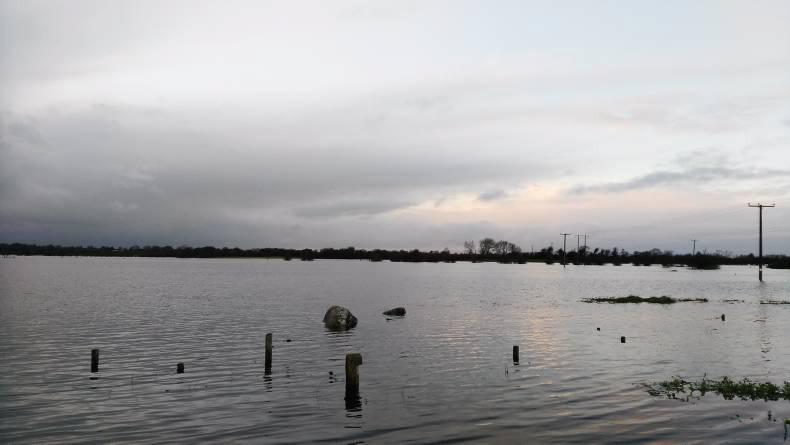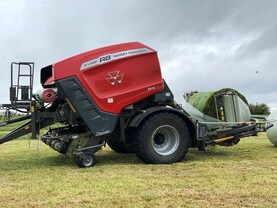The Irish Farmers Journal spoke to Padraig O’Kiely from Teagasc to get tips on what to do if the floods have made it to your silage.
“The first thing to do is for a farmer to closely assess their own situation,” O’Kiely said.
“For silage pits, it all depends on each scenario. From our experience, and in most cases, the damage to silage pits from flooding is usually quite modest. This is due to the fact that, if a pit is uncovered, the silage is quite compacted. Ultimately, with pits, there’s nothing you can do until the water level recedes,” O’Kiely added.
However, with silage bales often stacked on out farms and sometimes in fields, the problem is often more severe for bales. O’Kiely said that there are a number of options open to farmers with bales surrounded by water but the first step to examine the damage.
“The situation is certainly different with baled silage. You have bales often in more difficult places to get to and you can often see them in fields. If there is heavy rain then a farmer will have to go and take out a couple of bales to see what the situation is,” O’Kiely said.
“If the plastic is breached on those but the silage is unaffected or the water hasn’t gotten to the silage then the bale is fine to fed or can be wrapped either.
“If bales are well wrapped and well shaped then they can last a few days without any problems in flooding,” O’Kiely said before stressing the importance of examining all silage affected by flooding where possible.
For silage that has found to have been spoiled, O’Kiely said that a farmer should look to feed straw accompanied with concentrates. For cattle of all types, straw should be accompanied by concentrates of 16% protein.?
Read more
Full coverage: Storm Desmond flooding
The Irish Farmers Journal spoke to Padraig O’Kiely from Teagasc to get tips on what to do if the floods have made it to your silage.
“The first thing to do is for a farmer to closely assess their own situation,” O’Kiely said.
“For silage pits, it all depends on each scenario. From our experience, and in most cases, the damage to silage pits from flooding is usually quite modest. This is due to the fact that, if a pit is uncovered, the silage is quite compacted. Ultimately, with pits, there’s nothing you can do until the water level recedes,” O’Kiely added.
However, with silage bales often stacked on out farms and sometimes in fields, the problem is often more severe for bales. O’Kiely said that there are a number of options open to farmers with bales surrounded by water but the first step to examine the damage.
“The situation is certainly different with baled silage. You have bales often in more difficult places to get to and you can often see them in fields. If there is heavy rain then a farmer will have to go and take out a couple of bales to see what the situation is,” O’Kiely said.
“If the plastic is breached on those but the silage is unaffected or the water hasn’t gotten to the silage then the bale is fine to fed or can be wrapped either.
“If bales are well wrapped and well shaped then they can last a few days without any problems in flooding,” O’Kiely said before stressing the importance of examining all silage affected by flooding where possible.
For silage that has found to have been spoiled, O’Kiely said that a farmer should look to feed straw accompanied with concentrates. For cattle of all types, straw should be accompanied by concentrates of 16% protein.?
Read more
Full coverage: Storm Desmond flooding






 This is a subscriber-only article
This is a subscriber-only article









SHARING OPTIONS: